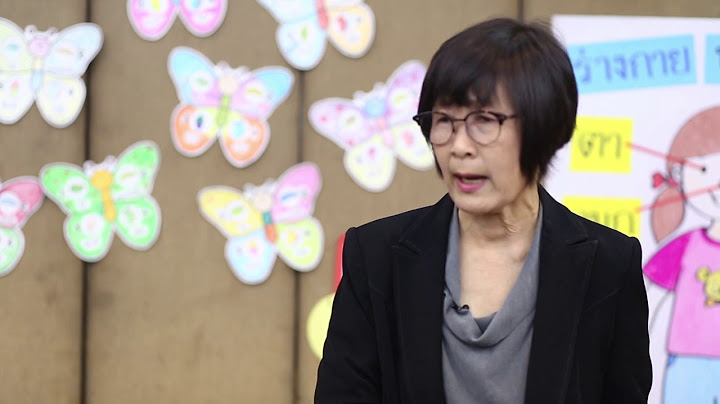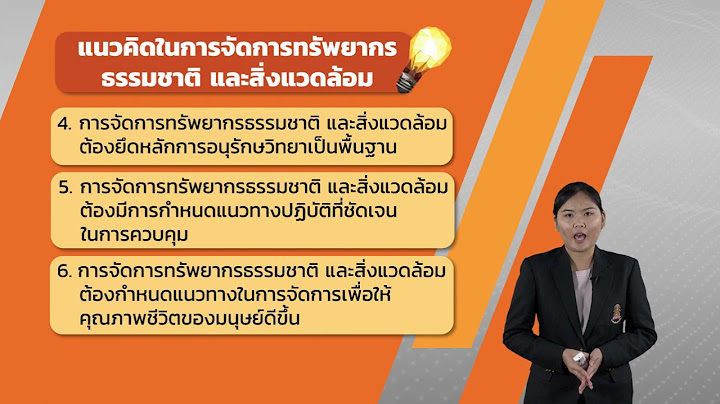This purpose of this research were 1) to find achievement of new researcher and 2) to find satisfaction of new researcher who trained by the Blending Training Program Integration with Knowledge Management System for New Researcher in Research Proposal Performing. The simple random sampling samples were 30 new researchers who interested to write research proposal and had not experience for research proposal performing. The Blending Training Program Integration with Knowledge Management System efficiency equal to 82.03/80.67 which was divide to two parts that the first part was used in e-Learning were coaching, collaboration learning, and knowledge management system and that the second part was used The techniques used in Face-to-Face Learning. The after process of training , the new researchers were evaluated by posttest and trainee’s satisfaction questionnaire. The statistics implemented were mean and standard deviation. The finding of research : 1) the achievement of new researcher... The objective of this thesis is to provide the transliteration and the translation of the chapter relating to the concepts of the planets, Daśās and the physiognomy of Bṛhatpārāśara-horāśāstra from Sanskrit into Thai, and to explore and compare these concepts as stated in Bṛhatpārāśara-horāśāstra with Thai Brahmajāti popular edition. The result of this study reveals that it is possible that Brahmajāti could be influenced by Indian thoughts due to the fact that the astrological concepts resemble Bṛhatpārāśara-horāśāstra, especially the concepts of the planets and Daśās. As for the concepts of the planets, their names in Brahmajāti have derived from Pali and Sanskrit which share the same etymology with the planets’ names in Bṛhatpārāśara-horāśāstra in terms of the meaning of the origin, the character and the position. Nevertheless, it is worth noted that according to Brahmajāti, the planets are created by lord Īśvara. The characters and the relationships of the planets in Bṛhatpārāśara-horāśāstra and Brahmajāti illustrates some differences. Still, the essential dignities of the planets such as rulership, exaltation and debilitation are similar. Concerning the conpets of Daśā, Brahmajāti calls out Daśā as “Thaksa” and Mahathaksa is also similar to the Aṣṭottarīdaśā in Bṛhatpārāśara-horāśāstra including the total age of 108 years, the age of the planets and the calculation of the span of the planet’s Daśā and the planet’s Antardaśā. Only the calculation of the first planet’s Daśā is different. In fact, Bṛhatpārāśara-horāśāstra is more concerned by the period of the moon in natal nakṣatra whereas Brahmajāti is concerned by the native’s lord of birthday. Bṛhatpārāśara-horāśāstra and Brahmajāti both calculate the span of the planets in Daśā system by cross-multiplication. However, the prediction in Bṛhatpārāśara-horāśāstra considers the planets’ essential dignities. It is interesting to indicate that most of the predictive texts are different. For the concept of the physiognomy, the predictions based on the effects of the characteristic features of various body parts as well as the effects of marks in Bṛhatpārāśara-horāśāstra apply specifically to women even though the last śloka of chapter 81 and some predictive texts in chapter 82 indicate that this can also be applied to men. However, the physiognomy in Brahmajāti predictions are applied to both women and men. The auspicious-inauspicious effects of the physiognomy of both scriptures are similar whereas the predictive texts are mostly different. ทคดยอ บทความนสรางแรงจงใจใหผปกครองตระหนกถงความคมคาของการลงทนทางการศกษาในยคไทยแลนด 4.0 โดยมวตถประสงคเพอคำนวณอตราผลตอบแทนทางการศกษาดวยวธสวนลด (Elaborated Method) ระหวางการสำเรจมธยมศกษาตอนตน (ภาคบงคบ) กบการสำเรจมธยมศกษาตอนปลายสายอาชวศกษาและสายสามญ กลมตวอยางเปนแรงงานหนมสาวมอายระหวาง 15-45 ป โดยใชขอมลจากการสำรวจแรงงานและการมงานทำ (Labor Force Survey) สำนกงานสถตแหงชาตป พ.ศ. 2558 พบวา แรงงานชายและหญงทจบ ม.3 และตดสนใจศกษาตอ ม.6 จะมอตราผลตอบแทนภายในของการลงทนการศกษาลดลงรอยละ 5.5 และ 3.5 ตามลำดบ และแรงงานชายและหญงทจบ ม.3 และตดสนใจศกษาตอ ปวช.3 จะมอตราผลตอบแทนเพมขนรอยละ 9.5 และ 7.5 ตามลำดบ ดงนนพอแมควรตดสนใจใหบตรศกษาตอสายอาชวศกษา (ปวช.) จะคมคามากกวาสายสามญ (ม.6) สำหรบสถาบนอาชวศกษาควรเพมสดสวนผเรยนอาชวศกษาและผลตแรงงานสอดคลองกบความตองการสถานประกอบการและนโยบายไทยแลนด 4.0 คำสำคญ: อตราผลตอบแทนทางการศกษา อาชวศกษา สามญศกษา ไทยแลนด 4.0 ABSTRACT This article motivates parents to realize the value of educational investment in the Thai era. 4.0. The purpose of this study was to determine the rate of return o... Musical composition “String Orchestra and Flute” composed to celebrate the Korea-Thailand sixtieth anniversary of the diplomatic relations. The composition conveys different cultural aspects of the two countries. Compositional materials are based on Thai rhythmic pattern, Thai melody—Kangkaw Kin Kluay—and Korean musical modes, especially P’yŏngjo, Kyemyŏnjo, and Oeumgae (Five Notes System). The main motive is a collection of E, F, and A or set of (015) derived from 60th anniversary. This neotonal composition comprised motivic development, variation in fragmentation, and quartal/quintal chord. This study aims to study the efficiency levels in operating international conferences of hotels in municipal district of Khon Kaen province, Thailand. The guidelines to improve the efficiency of organizing hotel business conferences were proposed in the result of this study. The in-depth interviews and questionnaires were employed to collect the data from 21 hotel’s representatives. The Data Envelopment Analysis (DEA) was used to analyze the collected data from the questionnaires. In order to analyze the productivity factors, several input factors were studied, such as delivery vehicles, size of conference room, maximum capacity for participants, size of parking lot, number of elevators, number of restrooms, provisional facilities, food and beverage cost, and number of staff. On the other hand, the output factor was the income of the hotels in organizing the international conference. It was found that the average technical efficiency: CRS model is 84%, whereas the average technical ... Volatile extracts obtained from 3 kinds of zingiberaceous plants, Boesenbergia pandurata Alpinia galanga and Zingiber officinal were tested for their unfavourable effects towards radial growth and spore germination of 6 postharvest disease fungi, Colletotrichum capsici (2 isolates), Colletotrichum gloeosporioides (2 isolates), Dothiorella sp., Lasiodiplodia theobromae, Pestalotiopsis sp. and Pythium aphanidermatum. The results demonstrated inhibited growth and spore germination of the tested fungi exposed to the medium poisoned with Boesenbergia pandurata or Zingiber officinale oil(1,000 ppm). B. pandurata oil caused no colony formation by C. capsici (isolate 170), Dothiorella sp. and P. aphanidermatum while 88 % reduction in radial growth of Pestalotiopsis sp. Z. officinale oil caused radial growth reduction on C. gloeosporioides isolate 163, C. gloeosporioides isolate 458, L. theobromae, Pestalotiopsis sp. and P. aphanidermatum by 69, 73, 82, 65 and 64 %, respectively. B. pandurat... |

กระทู้ที่เกี่ยวข้อง
การโฆษณา
ข่าวล่าสุด
ผู้มีส่วนร่วม
การโฆษณา
ผู้มีอำนาจ
การโฆษณา
ถูกกฎหมาย
ช่วย

ลิขสิทธิ์ © 2024 th.frojeostern Inc.




























